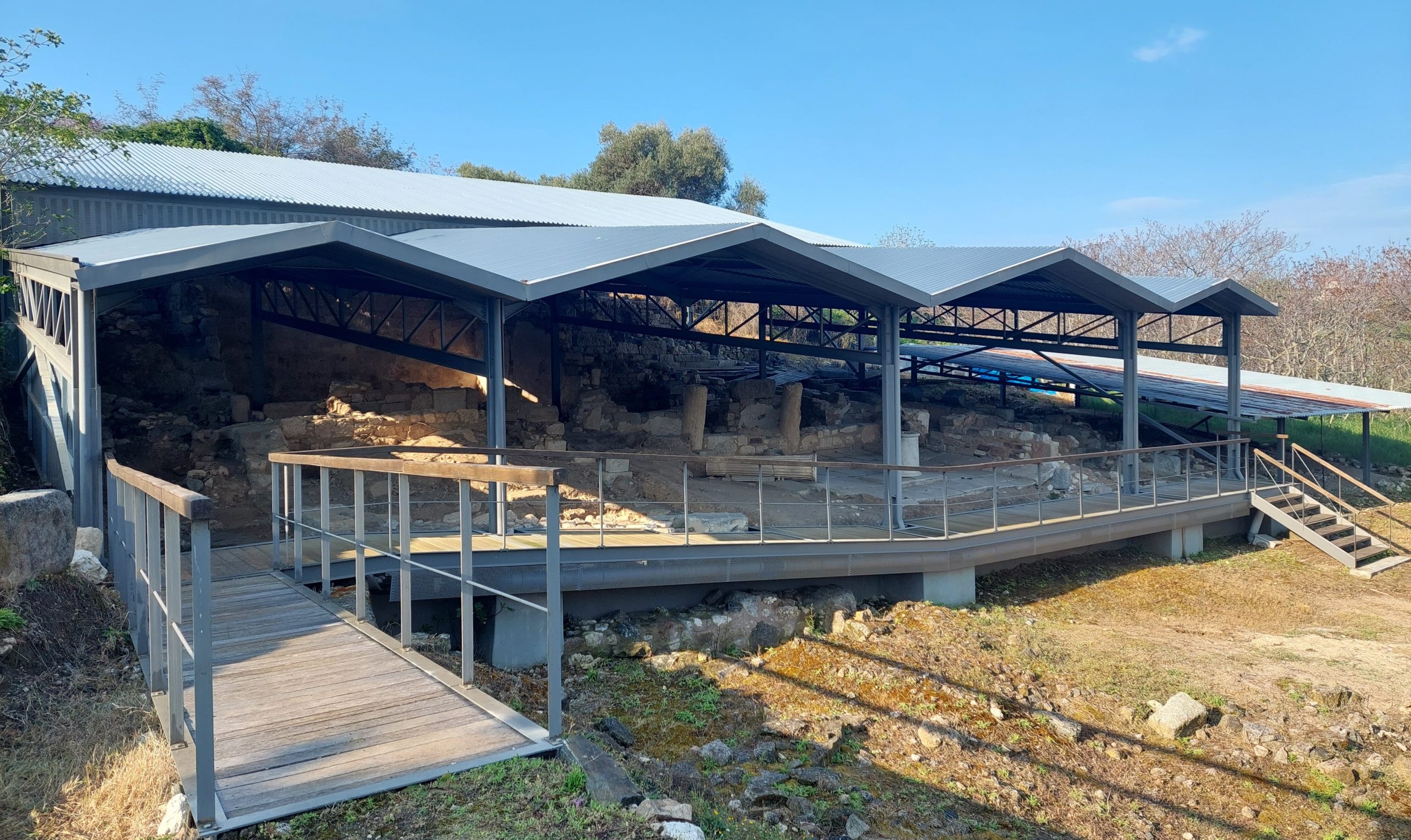
The edifice, which dates back to the Hellenistic period, is most likely a public building with successive building phases arranged around a marble-paved atrium (courtyard) with two wells. The excavation of the building has not been completed, but the spaces and their use are clearly defined. Pottery from the Hellenistic period was discovered inside the wells, which places the end of their use in the second half of the 1st century BC.
The edifice of the Hellenistic-period, whose excavation officially began in 1994 at the site known as Ladiava, was revealed after information was obtained from the owner of the plot of land. Excavation of the site was interrupted in 2000, while subsequent brief research excavations revealed its preserved floor plan and the destruction of its northern and northwestern parts.
It is probably a public building, arranged around a marble-paved atrium with two wells. The building is characterized by its successive uses, interventions and subsequent destruction, since the old village of Ierissos was built upon the ancient remains. During the conservation phase of the building, the South wall stands out, which (like the rest of the building) is composed of second-use building material. It exceeds 1m in width, in order to contain and withstand the pressures generated by the hillside. Two large rooms, the andron on the SE side and the pytheon, with eleven pithoi unearthed on the SW side, constitute parts of the initial phase of the building; the latter was destroyed in the middle of the 2nd century BC and two new spaces were established in the same place, with some of the pithoi used as depositories. The small kitchen with the small circular hearth composed of potsherds and a central tube, on which a clay grate rested, also belongs to the same phase. Most of the walls are plastered with white mortar, while fragments of colored mortar were also found. Among the wells in the atrium, with the marble well-heads, the smaller one (3m deep) was formed by putting together 2 pithoi that served as a water collector, and the bigger one (11m deep) was formed from specially cut curved shape tiles, placed facing each other, so as to form a cylinder. Pottery from the Hellenistic period was found inside the wells, which indicates that this space was last used in the second half of the 1st century BC.
References
Τρακοσοπουλου-Σαλακίδου, Ε., «Αρχαία Άκανθος 1986-1996», Το Αρχαιολογικό Έργο στη Μακεδονία και τη Θράκη 10Α (1996), σσ. 297-307.
Τρακοσοπουλου-Σαλακίδου, Ε., Νασιώκα, Ο., Παντή, Α., «Άκανθος. Ελληνιστική κεραμική από αποθέτες -πηγάδια κτίσματος της πόλης», στο Θ΄ Επιστημονική Συνάντηση για την ελληνιστική κεραμική, Αθήνα 2018, σσ. 243-666.
Address: Konstantinoupoleos 5,
631 00 Polygyros Halkidiki
Phone: +30 23710 22060
Fax: +30 2310 251892
Mount Athos Technical Office
Address: 7 Hippodrome Square, Thessaloniki
Phone: +30 2310 285163
Fax: +30 2310 251892
E-mail: [email protected]
